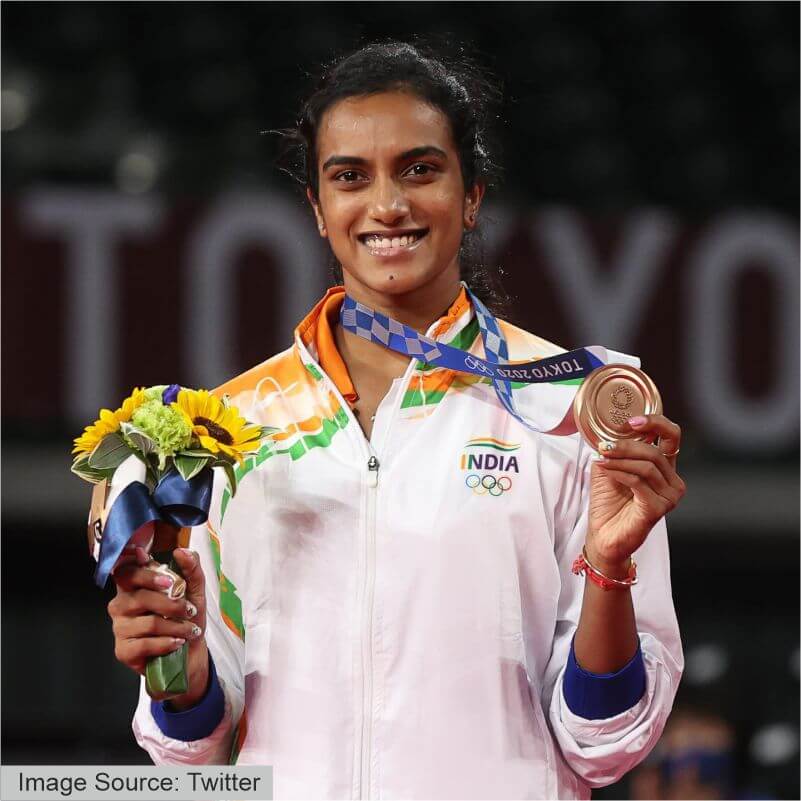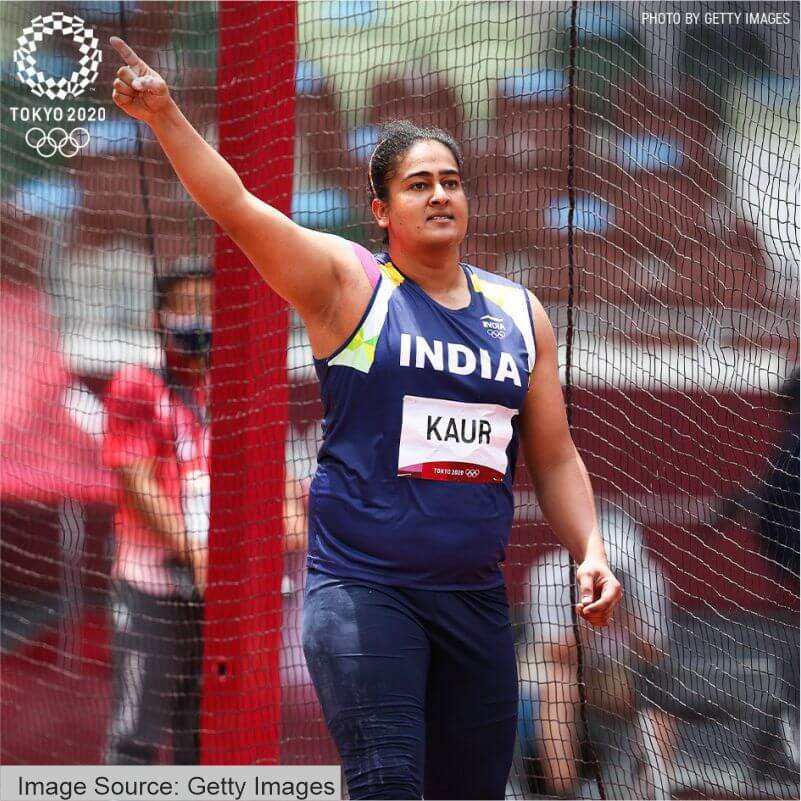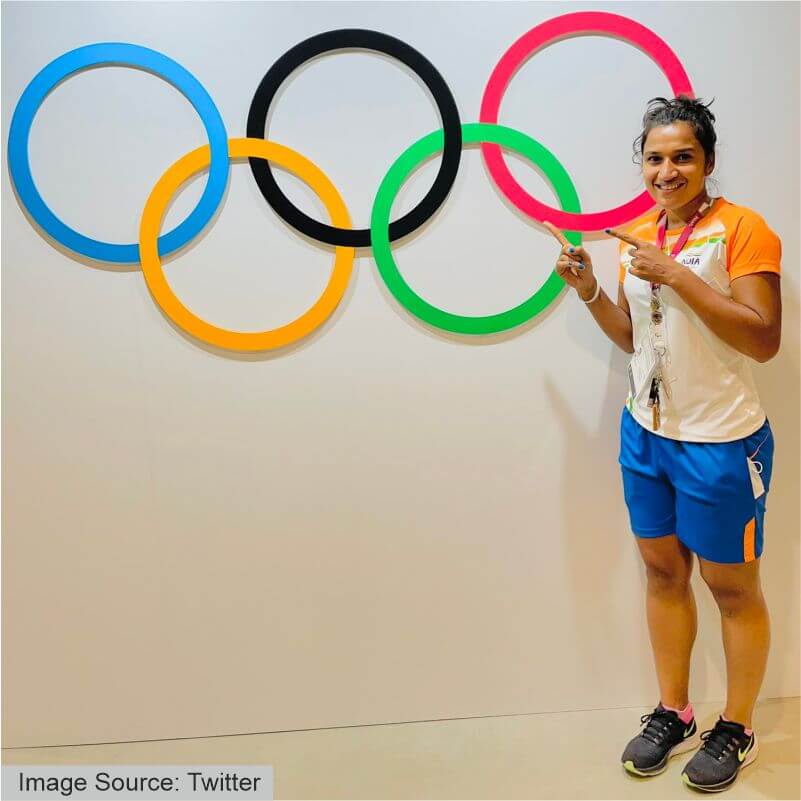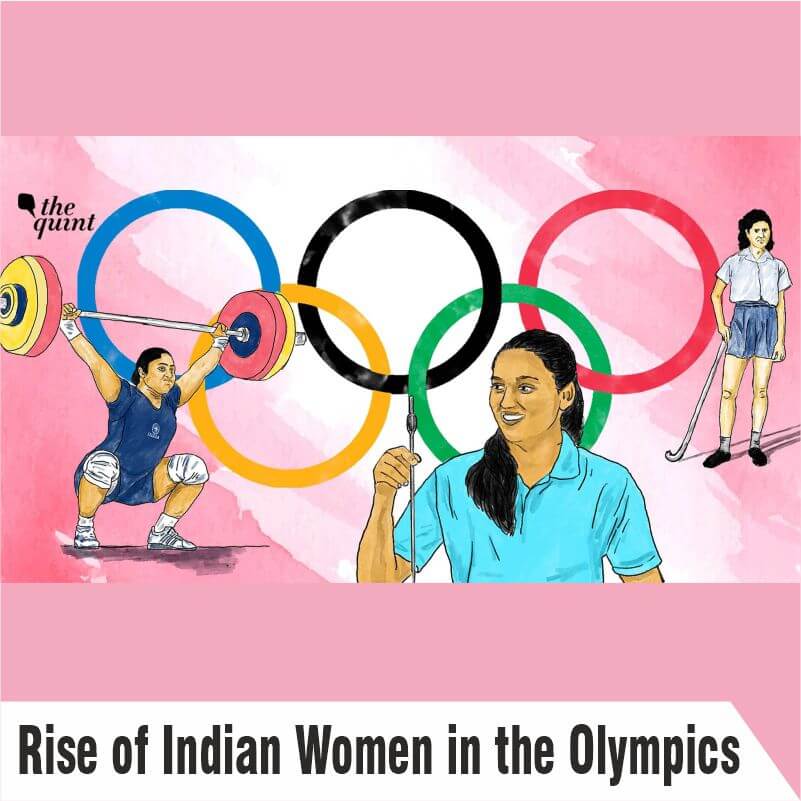According to BBC's recent survey to study what Indians think about women in sports. It was seen that as many as 64% of Indian adults did not participate in any kind of sport or physical activity. This figure was even worse when broken down by gender - nearly one and a half times more men (42%) said they played sport than women (29%). However, even this participation has an age skew with sports being played more by 15-24-year-old males than any other age and gender grouping.
With the 2020 Tokyo Olympics coming to an end, the women in the Indian contingent have made Indians feel happy with the feats they have achieved. From Mirabai Chanu's silver medal to the Indian women's hockey team who royally finished 4th in the score table, each one of them has inspired girls and women all over the country.
The top five Indian athletes on Twitter with the most mentions include P.V. Sindhu, Lovlina Borgohain, Mary Kom, Deepika Kumari, and Atanu Das. Women athletes are topping the Twitter charts not just in India, but globally too. The three athletes with the most global mentions on Olympics conversations are Brazilian skateboarder Rayssa Leal, American gymnast Simone Biles, and Brazilian gymnast Rebeca Andrade.
Since the turn of the century, there has been a quiet revolution in Indian sport with women asserting their sporting credentials. And it all started at the turn of the millennium when something unprecedented happened - an elusive Olympic medal was won by an Indian woman for the first time.
Let us look at the struggles each of these women athletes have gone through, and the way they fought patriarchy to achieve global appreciation.
1) Saikhom Mirabai Chanu

The silver medal for weightlifting (49 kg category) at the Tokyo Olympics 2020 made Manipur's Saikhom Mirabai Chanu a media favorite and one of the most adored public figures across the country. Mirabai Chanu’s story is one of courage in the face of poverty, lack of any support in her formative years, and being inspired by another diminutive weightlifting champion from Manipur — Nameirakpam Kunjarani Devi, whose achievements at the national and international arena led many in the state to take up sports. N Kunjarani, currently based in Delhi where she is serving as a nodal officer of the Central sports team in the Central Reserve Police Force (CRPF), is a proud mentor today.
The youngest of six siblings, Mirabai’s father Saikhom Kriti Singh is a construction worker and her mother Saikhom Tombi Devi runs a tea stall in the village. Mirabai's former mentors recalled how Mirabai used to live on homemade steamed black and white rice and boiled vegetables during the four years of intensive training.
Mirabai Chanu’s village at Nongpok Kakching was often a battleground between Central security forces and armed militant groups, with the former launching search operations and intense frisking and the latter going to homes for shelter or food.
Cries of ‘Bharat ki beti’ resounded when Mirabai Chanu landed at New Delhi, further amplified on social media where she has been anointed as ‘India’s pride’.
2) Lovlina Borgohain

Indian boxer Lovlina Borgohain brought home India's second bronze medal at the 2020 Tokyo Olympics after shuttler PV Sindhu as she went down swinging in her 69kg welterweight semifinal against Busenaz Surmeneli on August 4. Lovlina became just the second female boxer after MC Mary Kom to win an Olympic bronze medal. Mary Kom had won the 2012 London Olympics bronze.
Hailing from a remote Baromukhia village in upper Assam’s Golaghat district, Lovlina has punched her way out through many odds, including age-old patriarchy to take on the fiercest of opponents in the ring. Lovlina has been a fighter in the truest sense. From lifting LPG cylinders to working in the paddy fields to maintain fitness during the lockdown, before a bout of Covid -19 and a subsequent second wave derailed her Tokyo preparations, but Lovlina fought through it all to achieve a position on the podium.
Lovlina is Assam's first female boxer, who had to face immense pressure even while preparing for the Olympics. Her mother underwent a kidney transplant which forced her to take a break from the National Camp. Additionally, she went through a mental battle in the past year as well.
3) PV Sindhu

PV Sindhu created history on Sunday by winning the bronze medal match against China's He Bing Jiao at the Tokyo Olympics. She won the crucial encounter 21-13, 21-15 to become the first Indian woman ever to win two individual Olympic medals. She had lost the final of the women's singles event at the 2016 Rio Olympics to settle for a silver medal. Sindhu was born to P V Ramana and Vijaya in Hyderabad. Both her parents were national-level volleyball players. Sindhu started playing badminton at the age of eight and then joined Gopichand Badminton Academy. According to the BWF World Rankings, as of August 3, 2021, PV Sindhu ranks as world number 2, preceded by Chinese Taipei's Tai Tzu Ying. Sindhu’s first major recognition came in the form of the 5th Servo All India ranking championship in the under-10 category. In the under-13 category, she won the doubles titles at the Sub-Junior Nationals and the All India Ranking in Pune. At the 51st National School Games in India, she won the gold medal in the under-14 category. The ace shuttler came to international attention when she broke into the top 20 of the BWF World Ranking in September 2012 at the age of 17 and has featured in the top 10 of the world rankings, for most parts of her career.
4) Kamalpreet Kaur

Notably, Kamalpreet Kaur finished 6th in the women's discus throw final at the 2020 Tokyo Olympics with the best attempt of 63.70.
The Sports Authority of India (SAI) Centre was in Badal village, 30km from Kamalpreet’s village in Kabarwala. Despite the distance, the Indian team discus player never missed homemade food.
Kamalpreet even decided to quit the sport due to the poor financial condition of her family and her mother’s opposition, but took it up after her farmer father, Kuldeep Singh, supported her. Being a farmer, her father's finances weren’t enough to support Kamalpreet’s training as well as academics. He had to borrow money from his friends to run the house and bear Kamalpreet's school and training expenses.
The Kaur family was constantly taunted by their neighbors and relatives. They used to tell her mother that their daughter plays the game of boys. Some of the villagers even suggested Kamalpreet's parents get her married. All these taunts affected the family mentally, adding to their already existing pressure.
5) Rani Rampal

The captain of the Indian women's Hockey Team, Rani Rampal has come a long way to ensure India's fourth position in the Tokyo 202 Olympics. Rani, in her formative years, could not afford a hockey stick to become the youngest player in the national women’s hockey team to participate in the 2010 World Cup, who qualified at only 15 years of age. Hers is a truly inspirational story worth knowing.
Rani Rampal recalled her distress and the poor state of her family's financial background. Rani’s father was a cart puller and her mother was a maid. She was passionate about hockey since childhood and used to spend hours watching the players, who used to play at a nearby hockey academy in her area. Her father earned only Rs. 80 per day, so she could not afford a hockey stick. Every time she asked her coach to train her, he would refuse saying that she wasn't strong enough to get through the training session. This is when Rani began practicing with a broken hockey stick clad in a salwar kameez. However, her determination and zeal pushed her forward. Her family, bound by societal pressure, would not let her wear skirts to practice. In a recent interview, Rani Rampal recalled her ordeal and the poor condition of her family finances. She said she wanted to escape from her life, right from the electricity shortages to barely having 2 meals to seeing their home getting flooded. Rani recalled the academy rules where it was mandatory for each player to bring 500 ml of milk. But her family could only afford 200 ml of milk, so she would mix the milk with water and drink it. Fortunately, her coach supported her through thick and thin. He bought her hockey kits and shoes, besides taking care of her nutrition.
6) Vandana Katariya

Vandana Katariya became the first woman hockey player from India to score a hat-trick at Olympics. Katariya’s significant three goals helped India to secure a 4-3 over South Africa during Pool A match.
29-year-old Katariya has been a regular in the Indian team since her debut on a tour of Italy in August 2007. She started her career at 15, a couple of years before Rani Rampal. Being one of eight children born to Nahar Singh Katariya, a wrestler himself, the young athlete had spent her early years in Roshnabad near Haridwar and then moved to Meerut.
Coming from an orthodox village, Katariya had always heard her neighbors saying “she’s a girl, don’t let her step outside”. Some people doubted her, but Katariya always had her father’s support. She told ESPN, in a recent interview, that her father always wanted all his children to pursue sports, revealing that her parents had to forgo certain comforts to ensure that young hockey players had access to camps and training. She was selected for the junior team in 2013 and has been an asset for the Indian team and helped her teammates clinch bronze at the 2013 Women’s Hockey Junior World Cup. Katariya was India’s highest scorer in the tournament with five goals. A year later, she was in the senior team playing at the Asian Games and the team went on to win the bronze. Vandana was also part of the squad that won gold at the 2017 Asia Cup. In 2018, she helped the team to win a silver at the Asian Games and won the player of the tournament award. Tokyo 2020 is Katariya’s second Olympic appearance, after Rio 2016.
7) Aditi Ashok

Aditi Ashok was the youngest player at the 2016 Olympics when she made women's golf into headline news in India by shooting back-to-back 68s to be tied eighth on six-under-par after 36 holes.
Women's golf was virtually unknown in India before Ashok's Olympic exploits. Many Indian people were trying to figure out what golf was so that they could understand how Aditi was playing and if she had a chance to win a medal, she told reporters at Kasumigaseki Country Club.
Aditi, in an interview, recalled how she started playing golf, not a common pursuit for girls growing up in Bangalore like her.
She and her parents started playing golf at the same time. They used to have breakfast at a restaurant that overlooked a golf driving range which piqued their interest in the sport. When she started dreaming of playing golf professionally, it wasn't even a sport in the Olympics. Aditi Ashok narrowly missed out on becoming the first Indian golfer to win a medal at the Olympics, finishing fourth in Tokyo on Saturday. She was in medal contention for much of the four rounds but fell agonizingly short, finishing a shot behind Japan's Mone Inami and Lydia Ko of New Zealand, who were tied for the silver medal and went into a playoff. She finished only two shots behind the gold medal winner Nelly Korda of the USA.
It is inspiring to watch these wonderful women come a long way. These sporting achievements by Indian women must be utilized to promote sport among young girls in India. India has always had sporting icons in the past, but most have been men. The evolution of female Indian athletes as icons will make it easier for young girls to identify with them and look up to them as role models, thus encouraging their participation in sport. Share your thoughts with us in the comment section below!
